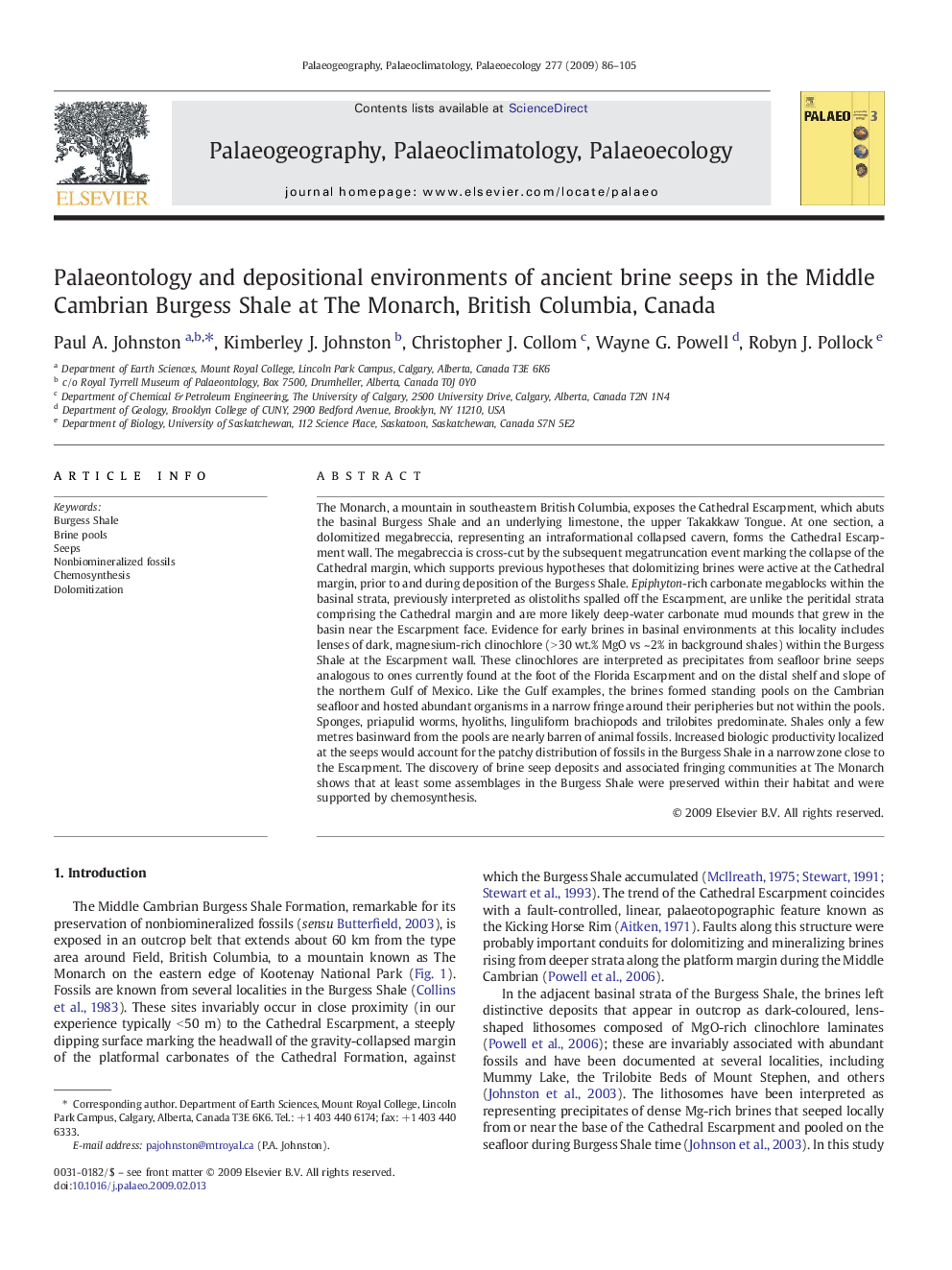| Article ID | Journal | Published Year | Pages | File Type |
|---|---|---|---|---|
| 4468165 | Palaeogeography, Palaeoclimatology, Palaeoecology | 2009 | 20 Pages |
The Monarch, a mountain in southeastern British Columbia, exposes the Cathedral Escarpment, which abuts the basinal Burgess Shale and an underlying limestone, the upper Takakkaw Tongue. At one section, a dolomitized megabreccia, representing an intraformational collapsed cavern, forms the Cathedral Escarpment wall. The megabreccia is cross-cut by the subsequent megatruncation event marking the collapse of the Cathedral margin, which supports previous hypotheses that dolomitizing brines were active at the Cathedral margin, prior to and during deposition of the Burgess Shale. Epiphyton-rich carbonate megablocks within the basinal strata, previously interpreted as olistoliths spalled off the Escarpment, are unlike the peritidal strata comprising the Cathedral margin and are more likely deep-water carbonate mud mounds that grew in the basin near the Escarpment face. Evidence for early brines in basinal environments at this locality includes lenses of dark, magnesium-rich clinochlore (> 30 wt.% MgO vs ~ 2% in background shales) within the Burgess Shale at the Escarpment wall. These clinochlores are interpreted as precipitates from seafloor brine seeps analogous to ones currently found at the foot of the Florida Escarpment and on the distal shelf and slope of the northern Gulf of Mexico. Like the Gulf examples, the brines formed standing pools on the Cambrian seafloor and hosted abundant organisms in a narrow fringe around their peripheries but not within the pools. Sponges, priapulid worms, hyoliths, linguliform brachiopods and trilobites predominate. Shales only a few metres basinward from the pools are nearly barren of animal fossils. Increased biologic productivity localized at the seeps would account for the patchy distribution of fossils in the Burgess Shale in a narrow zone close to the Escarpment. The discovery of brine seep deposits and associated fringing communities at The Monarch shows that at least some assemblages in the Burgess Shale were preserved within their habitat and were supported by chemosynthesis.
